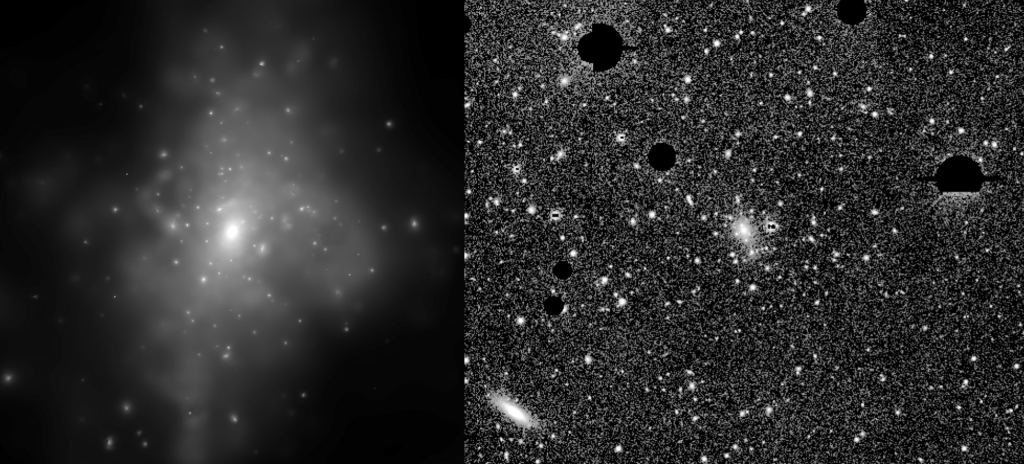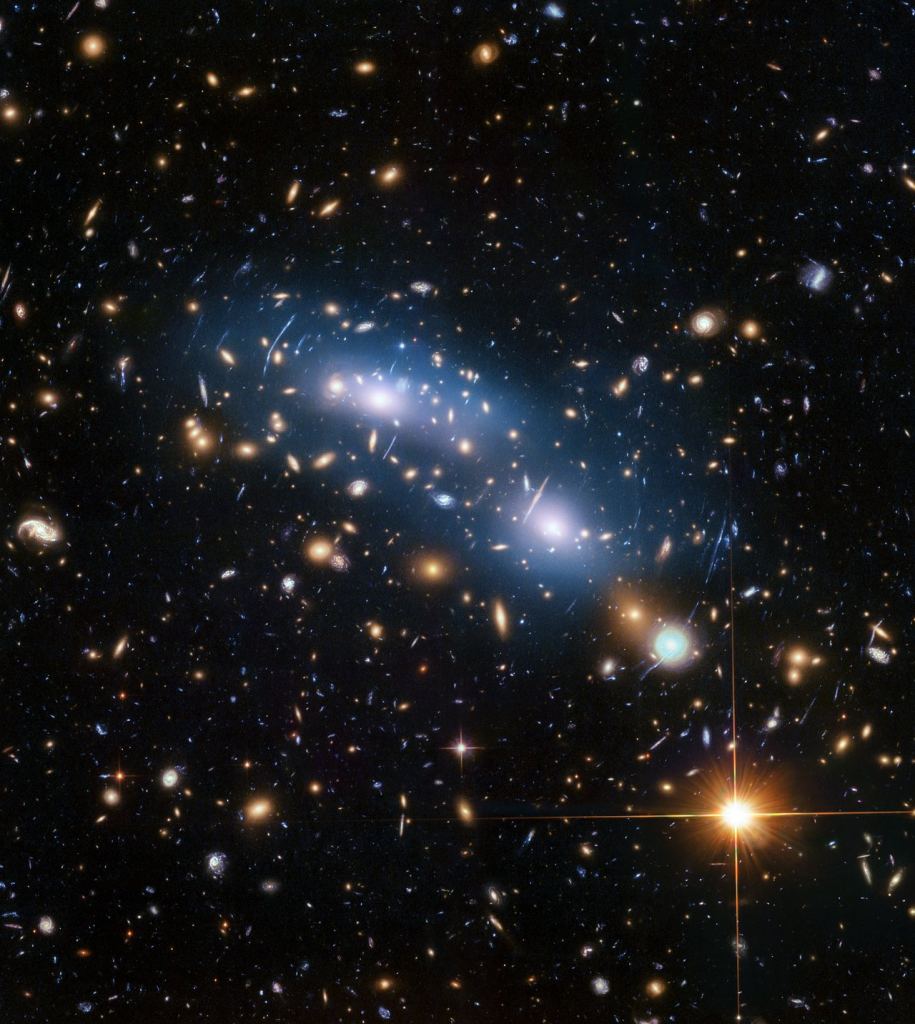By Measuring Light From Individual Stars Between Galaxy Clusters, Astronomers Find Clues About Dark Matter
By Paul M. Sutter
Astronomers have been able to measure an extremely faint glow of light within galaxy clusters, and that measurement came with a surprise: it traced the amount of invisible dark matter, something that scientists have been trying to pin down for decades.
Using the latest data release of the Dark Energy Survey, a massive scan of the sky designed to map out the positions of galaxies throughout the universe, a team of astronomers instead focused on something else: the space between galaxies.
Each galaxy cluster in our universe is home to up to a thousand galaxies, and those galaxies are by far the greatest source of visible light from the clusters. But countless “rogue stars”, not bound to any galaxy in particular, also contribute their own, much more feeble light, known as intracluster light (ICL).
The ICL is exceedingly difficult to detect, because to measure it you have to look very far away from any individual galaxy, but with so little light it strains the sensitivity of the survey telescope. To make the feat possible, the team combined the data from over 800 galaxy clusters.
“Because we had quite a bit of data from the Dark Energy Survey, we were able to cancel out a lot of noise to do this kind of measurement. It’s statistical averaging,” said Fermilab scientist Yuanyuan Zhang, who led the studies. The results appeared in a paper published in The Astrophysical Journal in April 2019. Another appeared more recently in Monthly Notices of the Royal Astronomical Society.
Seeing in the dark
As a bonus, the team used a technique called weak gravitational lensing to map the amount of dark matter – an invisible form of matter that makes up most of the mass of the universe – within those same galaxy clusters. They found a simple relationship, where the amount of dark matter correlated nicely with the amount of ICL.
“We did not expect to find such a tight connection between these radial distributions, but we did,” said scientist Hillysson Sampaio-Santos, the lead author of the most recent paper.

Strangely, computer simulations of galaxy clusters don’t predict the same relationship.
“If the simulation didn’t get it right, it could mean that the simulated intracluster light is produced at a slightly different time than in observations. The simulated stars didn’t have enough time to wander around and start to trace dark matter,” Zhang noted.
Naturally, there’s a lot more work to be done.
The post By Measuring Light From Individual Stars Between Galaxy Clusters, Astronomers Find Clues About Dark Matter appeared first on Universe Today.

February 3, 2021 at 10:21PM
via Universe Today read more...

Post a Comment